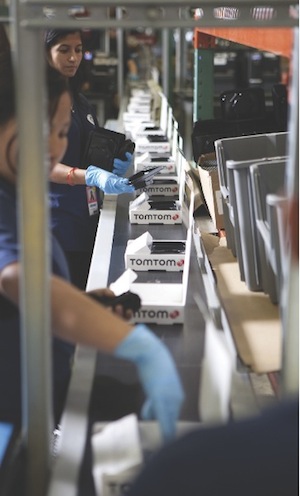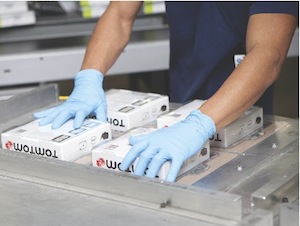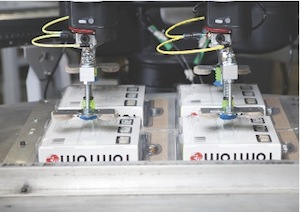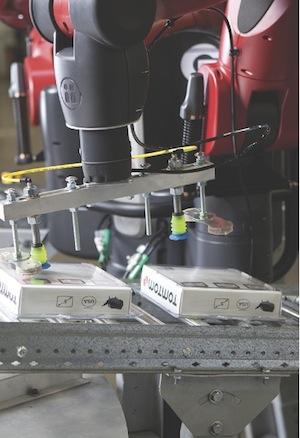Genco,
Ft. Worth, Texas
Size: Three buildings totaling 1 million square feet
Products: The campus manages the returns, repair, refurbishment and forward distribution of consumer electronics products
Throughput: The campus processes from 12,000 to 15,000 returns each day and ships up to 60,000 devices through its direct fulfillment operations. It ships another 200,000 pieces a day through bulk fulfillment.
Shifts: 2 shifts/7 days
Employees: 1,500 to 1,700 employees in operations.
At Genco’s Ft. Worth campus, piece-picking robots are an integral part of the packaging process for the consumer electronic devices that are returned, repaired and redistributed.
Step 1. The process is initiated upstream from the sealing station. There, associates kit the device—a cell phone, a GPS or some other device—and collateral such as the owners manual and phone charger into a thermoform tray. The tray, also known as a clam shell, is then conveyed downstream to the sealing station.

Step 2. A teammate working side by side with the robot loads four clams into a fixture on the sealer turntable.
 >
>Step 3. Once the fixture is fully loaded, the operator presses a button that causes the turntable to rotate product into the sealer. The sealer sends an electronic message to the robot that the sealing process has been initiated. When the operator initiates the next stage, sealed product exits the sealer. The robot picks up two finished packages with each hand, or a total of four packages in one motion.
 >
>Step 4. Sealed packages are placed on an intermediate conveyor that transports them to a main conveyor feeding downstream packaging and shipping processes.
 >
>System suppliers
Robots: Rethink Robotics, rethinkrobotics.com/products/baxter/
Automatic lift trucks: Balyo, balyo.com; Yale, yale.com








